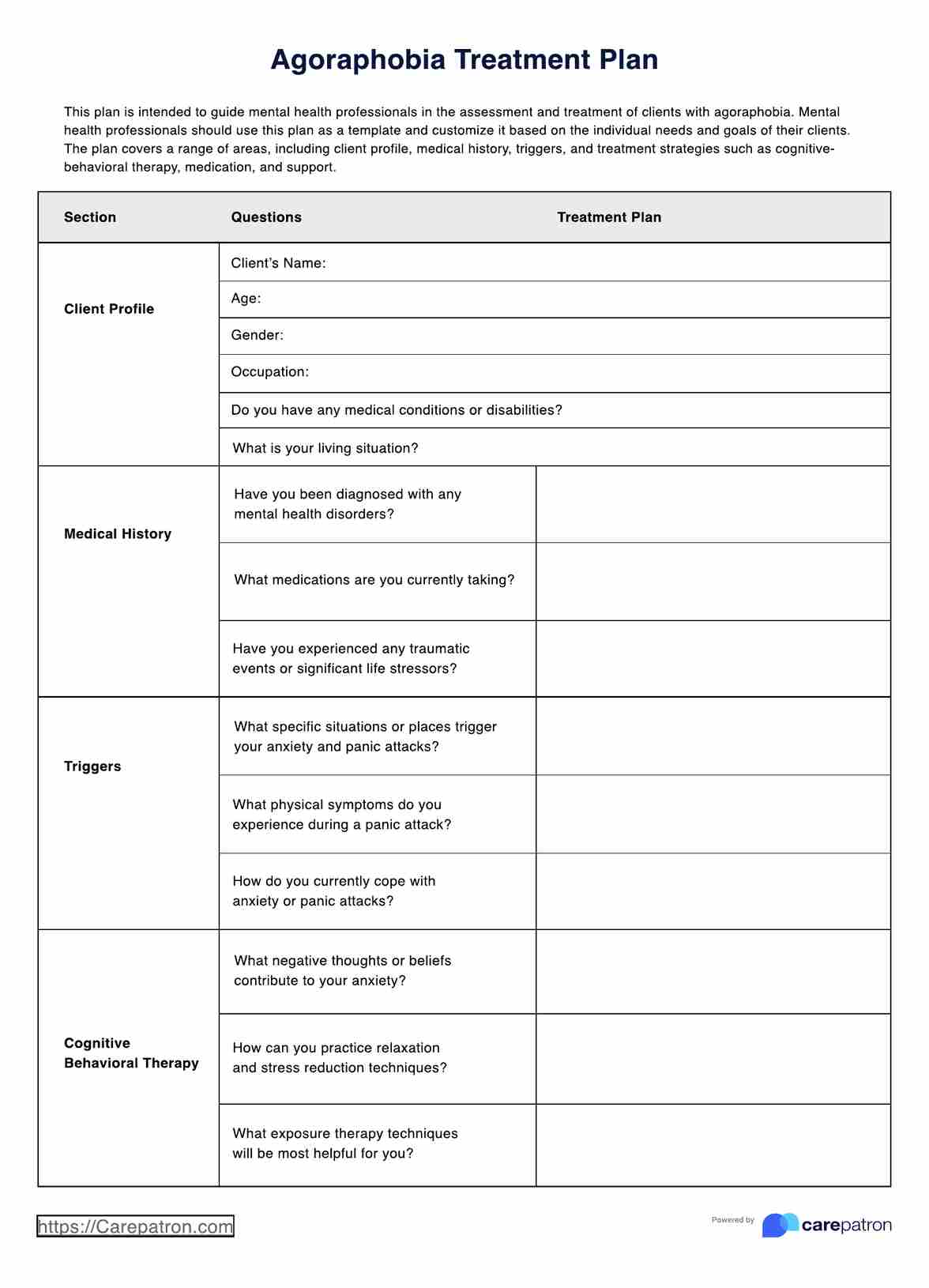You should use an Agoraphobia Treatment Plan when working with a patient diagnosed with agoraphobia.

Agoraphobia Treatment Plan
Discover how an Agoraphobia Treatment Plan can help you manage your symptoms. Get a free printable Agoraphobia Treatment Plan example in PDF format.
Use Template
Agoraphobia Treatment Plan Template
Commonly asked questions
It is essential to individualize an Agoraphobia Treatment plan because each patient's symptoms, triggers, and goals for treatment may differ. A customized treatment plan can more effectively manage patients' symptoms and help them achieve their goals.
Mental health professionals such as psychiatrists, psychologists, social workers, and counselors typically have access to an Agoraphobia Treatment Plan.
EHR and practice management software
Get started for free
*No credit card required
Free
$0/usd
Unlimited clients
Telehealth
1GB of storage
Client portal text
Automated billing and online payments











